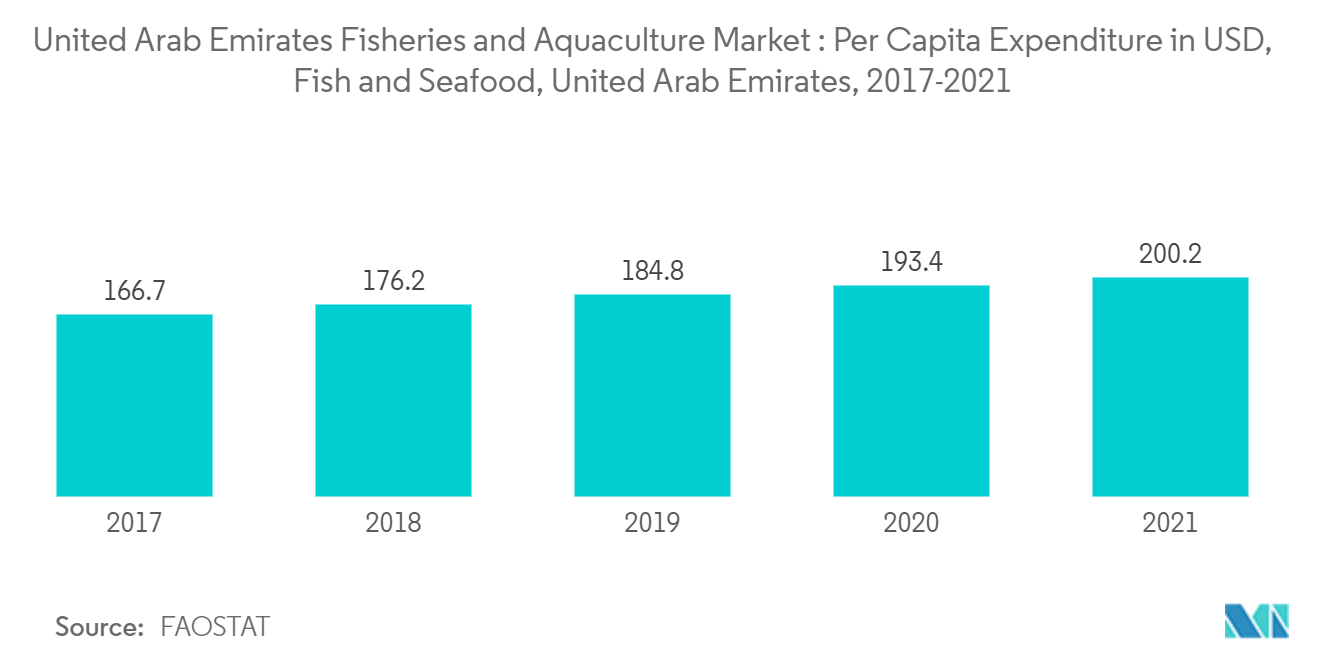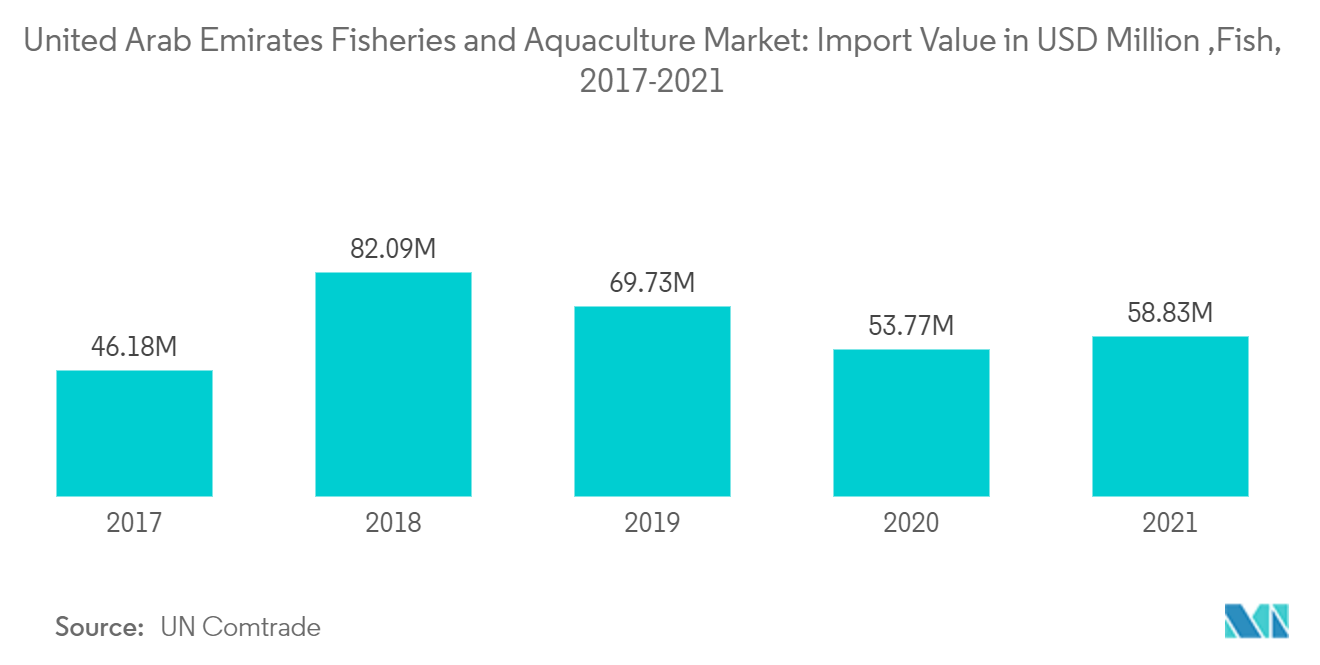Market Trends of United Arab Emirates Fisheries and Aquaculture Industry
This section covers the major market trends shaping the UAE Fisheries & Aquaculture Market according to our research experts:
Growing Demand for Fish and Seafood Products
The demand for fish and seafood is increasing among consumers, as they are high in nutrition and contain low-fat protein. The rise in meat consumption, growing health concerns, changing diet patterns, urbanization, population, and economic growth are the factors influencing the higher preference for seafood products. The United Arab Emirates is the largest consumer of fish among all GCC countries, with the majority of the population preferring seafood, which is driving the demand. The United Arab Emirates has acquired food security through the availability of fresh fish.
According to Euromonitor International, consumer expenditure in the United Arab Emirates for fish and seafood in 2021 was USD 179. This trend is expected to grow during the forecast period. Norway is one of the biggest suppliers of fresh fish to the United Arab Emirates; in 2020, the total import was valued at USD 58.9 million. The growing demand for high-protein diets is driving the demand for fish and seafood products to meet diet requirements. This trend is anticipated to rise exponentially, driving the fisheries and aquaculture market.

Increasing Import of Fish is Driving the Market
The growing population, coupled with the increasing consumption of fish, is leading to dependence on the import of fish to meet the domestic demand. According to FAO 2021 data, the United Arab Emirates consumes more than 220,000 metric tons of fish per year, making its seafood consumption greater than the global average, estimated to be 28.6 kilograms per year.
The United Arab Emirates is a net importer of fish and seafood, the major exporters to the country are Vietnam, Uganda, Norway, and Spain, among others. According to Agriculture and Agrifood Canada's UAE trend analysis, the United Arab Emirates is a net importer of seafood and fish, as the majority of the food consumed in the country is imported. According to data from UN Comtrade, the import value of fresh fish to the United Arab Emirates was estimated to be USD 58.8 million, a 27.5% increase from 2017. The imports are expected to increase.
According to the ITC Trade, in 2020, imported frozen fish in the United Arab Emirates was valued at USD 89,549.00 thousand compared to USD 58,924.0 thousand in 2017. In 2020, Greece, Ghana, Myanmar, and Chile were the major exporters to the United Arab Emirates, with a share of 24.5%, 16.1%,12.7%, and 6.1%, respectively. Greece accounted for an export value of USD 21,972 thousand. The import of fish is expected to grow further during the forecast period due to the increasing demand from the consumers.


